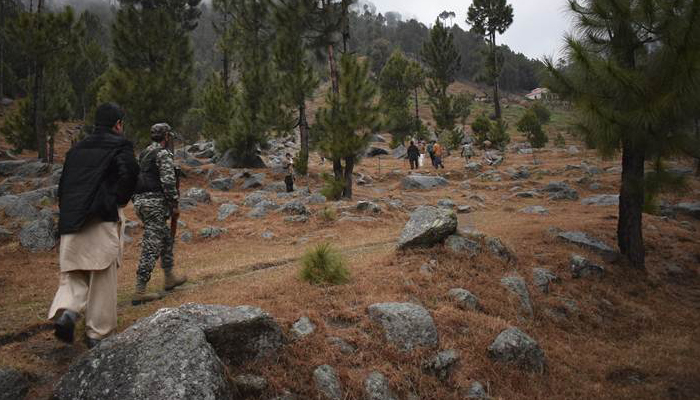TRENDING TAGS :
Radar imagery confirms 4 buildings in Jaish madrasa were hit in IAF strike
As per sources, intelligence agencies have evidence in the form of imagery from Synthetic Aperture Radar (SAR), showing that the four buildings, identified as targets, were hit by five S-2000 precision-guided munition (PGM) fired from IAF’s Mirage-2000 fighter jets.
New Delhi: The Synthetic Aperture Radar (SAR) imagery showed the wreckage of four buildings of Madrasa Taleem-ul-Quran demolished by Indian Air Force, on Monday-Tuesday night, in a non-military operation on Jaish-e-Mohammed terror camps at Balakot, as per sources.
The intelligence agencies, however, contradicting governments claim of over 200 casualties from IAF strike, said that limitations of technical intelligence and lack of ground intelligence at this point make any assessment of terrorists killed in the attack “purely speculative”.
“We have not been able to get any reliable intelligence inputs and any figures of terrorists killed in the airstrike is purely speculative,” an official said.
The IAF had struck down the terrorist camps across the line of control in the Pakistan occupied Kashmir (PoK) at around 3.30 am in the morning. Where 12 Mirage 2000 jets had dropped 1,000 kg bombs on the terror camp, completely destroying the targets.
As per sources, intelligence agencies have evidence in the form of imagery from Synthetic Aperture Radar (SAR), showing that the four buildings, identified as targets, were hit by five S-2000 precision-guided munition (PGM) fired from IAF’s Mirage-2000 fighter jets.
The buildings were in the campus of the madrasa run by Jaish which is located on the same ridge line as the hilltop, a few hundred metres to the east.
Pakistan, although, confirmed the air strikes by India but has denied that there were terror camps or that there was any damage.
“Why did the Pakistan Army seal the madrasa after the strike? Why did it not allow journalists to visit the madrasa? We have evidence in the form of SAR imagery to show that a building used as a guest house, where brother of Maulana Masood Azhar used to stay; an L-shaped building where trainers used to stay; a double-storied building used to house students entering the seminary and another building where those undergoing final combat training used to stay, were hit by the bombs,” an official told the media.
‘It is for the political leadership to decide if it wants to release that imagery and make public what is a ‘classified’ capability. The SAR images are not as clear as satellite pictures and we couldn’t get a good satellite picture on Tuesday because of heavy clouds. That would have settled the debate,” the official further said.
“The madrasa was selected carefully as it was in the middle of nowhere and there was little chance of any civilian casualties. Intelligence given to the IAF was accurate and timely,” the official added.
According to sources at the site of the bombings, four large craters could be seen, and up to 15 pine trees were brought down by the blasts.
The buildings were targeted by the IAF’s highly accurate, jammer-proof Israeli bombs ( S-2000 PGM), which are not meant to destroy the building but only to cause damage after they enter a building.
“It first penetrates through the roof, then enters the building and explodes after a delay. It is meant to hit the command and control centres and does not destroy the building. The software has to be programmed with the type of roof – its thickness, material of construction etc. – and that, accordingly, sets the delay period for the PGM,” said an expert.
The airstrike was conducted after receiving credible intelligence of more possible Pulwama like attacks in India and that more fidayeen jihadis were being trained for this purpose.



